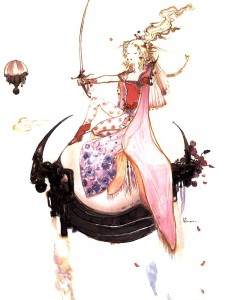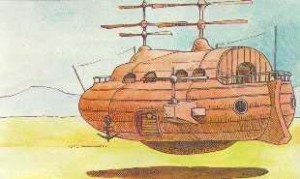Final Fantasy VI was the first Final Fantasy game I played, and, as such, it holds a good deal of sentimental value. To this day, it remains one of my favourite games of the series. It’s also still one of the most popular ones. The last FF of the  SNES generation, it was unleashed upon the Western world as FFIII back in the day, due to the numerical confusion caused by the non-release of FFII and the real FFIII. Epic, exciting, engrossing, full of drama, humour and emotion, this game brought a new sense of scope to the FF saga. Gone are the elemental crystals and four orphans copypasted from the first FF. The game develops a distinctly steampunk vibe and not only introduces the first–and, for a long time, only–female lead in the series, but also its first truly memorable and unique villain. Couple that with one of the largest and most lovable character casts, not to forget a wonderful soundtrack, and you’ve got yourself a recipe for success.
SNES generation, it was unleashed upon the Western world as FFIII back in the day, due to the numerical confusion caused by the non-release of FFII and the real FFIII. Epic, exciting, engrossing, full of drama, humour and emotion, this game brought a new sense of scope to the FF saga. Gone are the elemental crystals and four orphans copypasted from the first FF. The game develops a distinctly steampunk vibe and not only introduces the first–and, for a long time, only–female lead in the series, but also its first truly memorable and unique villain. Couple that with one of the largest and most lovable character casts, not to forget a wonderful soundtrack, and you’ve got yourself a recipe for success.
Graphically, in comparison to the two FFs which preceded it on the SNES, the game is a good few miles ahead. 2D it may be, but it’s beautiful 2D. The environments are quaint and detailed, just like illustrations to a fairytale. The only background that I can outright criticise is the chocobo riding screen, which just ends up hurting your brain after a while. The sprites are large and very expressive, broadening the palette of the characters’ visible emotions even further than FFV. There is also no longer any difference in size between the sprites on the world map and the sprites on the battlefield.
Just as all its predecessors, FFVI has been remade a couple of times, and now exists on the SNES, PS and GBA. Like FFV, the PS version comes with lovely introductory and concluding FMVs. But, unlike FFV, I wouldn’t really be able to give a definite recommendation as to which version to play. I’ve not tried the PS one, although I hear it has a serious issue with loading times, but between the SNES and GBA versions, it’s really a toss-up. The game remains largely identical, with only two optional dungeons and four new Espers added to the mix (and, considering the huge amount of Espers already available in the original game, they feel like overkill). The major bugs have been squished, and the script has been partially retranslated, but considering the iconic status that Ted Woolsey’s original SNES text has acquired, this wasn’t exactly necessary or expected. However, none of these changes harm the game either, so it’s just a matter of picking the easiest version to find. But, by all means, if you love RPGs and have never played this game before, do yourself a favour and remedy that ASAP.
Detailed review available! Read more here.




